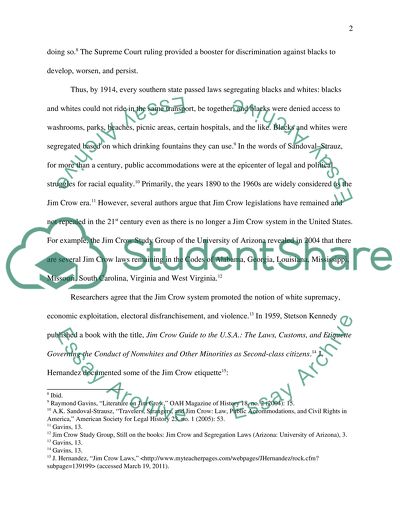Cite this document
(“Jim Crows Laws Research Paper Example | Topics and Well Written Essays - 1500 words”, n.d.)
Retrieved from https://studentshare.org/family-consumer-science/1412490-jim-crows-laws
Retrieved from https://studentshare.org/family-consumer-science/1412490-jim-crows-laws
(Jim Crows Laws Research Paper Example | Topics and Well Written Essays - 1500 Words)
https://studentshare.org/family-consumer-science/1412490-jim-crows-laws.
https://studentshare.org/family-consumer-science/1412490-jim-crows-laws.
“Jim Crows Laws Research Paper Example | Topics and Well Written Essays - 1500 Words”, n.d. https://studentshare.org/family-consumer-science/1412490-jim-crows-laws.


